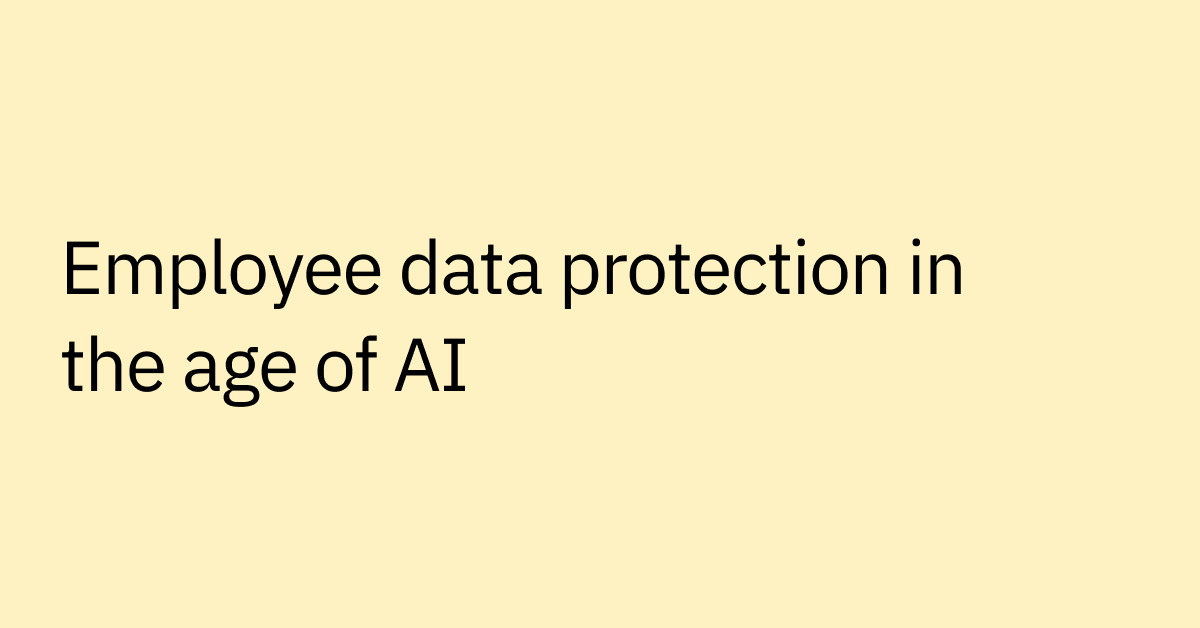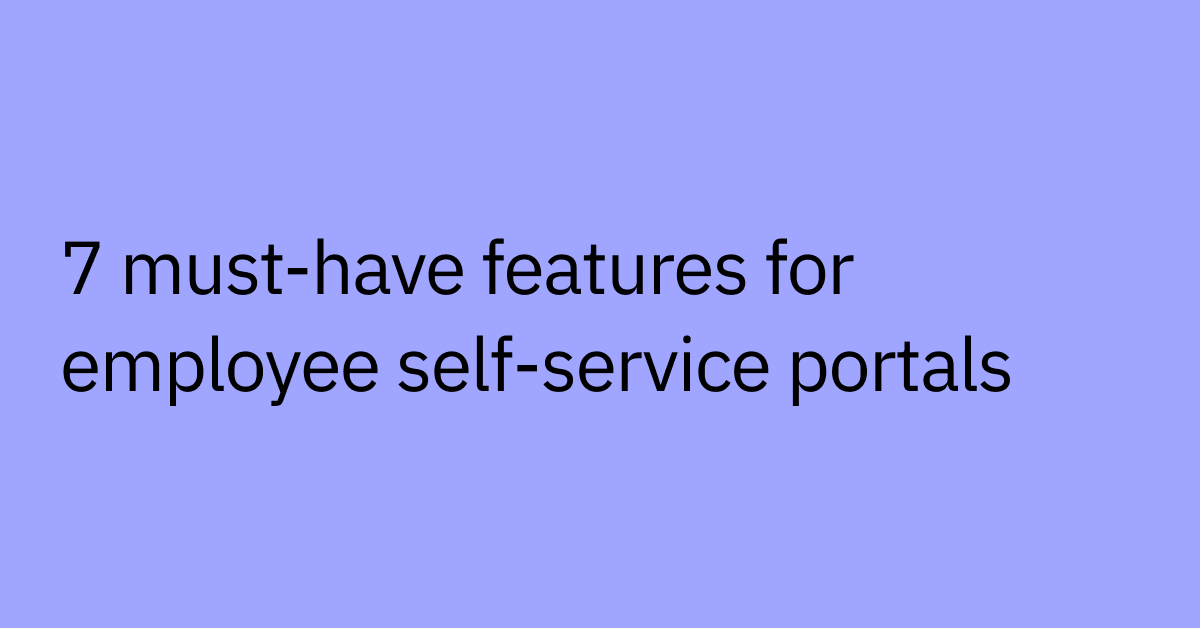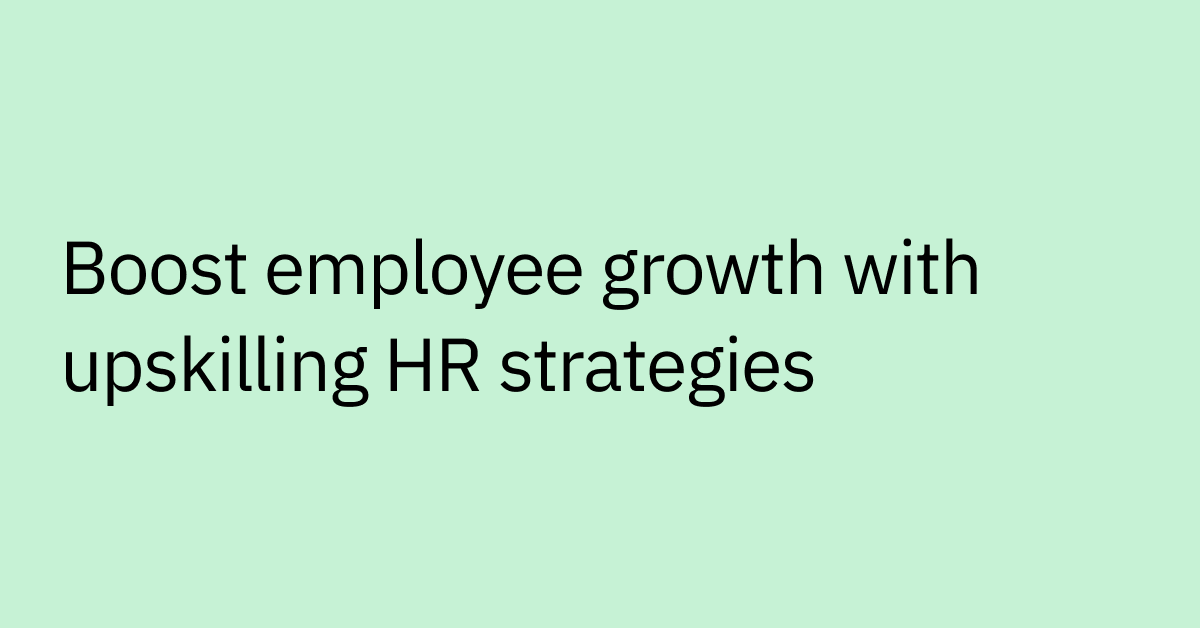Table of contents
Highlights
- Traditional onboarding breaks down due to siloed ownership, manual tools, and a lack of visibility, leading to delays, confusion, and poor new hire experiences.
- Modern onboarding requires dynamic, responsive workflows, not static, one-size-fits-all checklists.
- Embedding onboarding into collaboration tools like Slack and Teams meets employees where they are and delivers real-time, in-flow support.
- Five core principles — automation, personalization, preboarding, real-time tracking, and self-service — are essential for streamlining onboarding at scale.
Your new engineering hire starts Monday, excited to dive into projects and make an immediate impact. But within hours, that enthusiasm fades. Their laptop hasn't arrived, they're locked out of critical systems, and it's unclear whether it's IT or Human Resources that should step in to help.
Despite investing in talent acquisition, many companies struggle with what happens when issues arise during the onboarding process. Turning new hires into productive team members is the goal, of course, but roadblocks can cause headaches for everyone involved.
Too many handoffs, excessive manual work, and disconnected ownership across HR, IT, and hiring teams slow everything down. When onboarding breaks down, new employees may lose momentum, and employee engagement and enthusiasm drop.
But there's a better way to go about this: moving from fragmented, manual workflows to a connected, streamlined process built for scale while fixing common gaps with automation and artificial intelligence (AI), and agentic AI that is able to independently plan, reason, and take action complete tasks.
Why traditional onboarding processes break down — and how to fix them
Outdated approaches can lead to frustration for new hires while generating inefficiency across HR, IT, managers, and Finance teams.
These manual onboarding programs can even result in reduced job satisfaction, slower productivity ramp-up, and higher turnover risk, which is the opposite of what you're trying to achieve.
Siloed ownership across HR, IT, and hiring managers
Onboarding responsibilities are often spread across departments without shared workflows, connected systems, or clear accountability as to who owns which part of the process. HR may handle paperwork and benefits while IT manages system access. Managers might then focus on role-specific training. Or it's some mix of all of the above
This lack of clarity can cause confusion, duplicate work, delays, and inconsistent experiences for new hires who don't know where to turn for help.
Fix: Establish workflows that have clear ownership, cross-team visibility, and automated reminders to keep every stakeholder aligned throughout the entire onboarding process. Shared workflows combined with agentic AI can help eliminate the guesswork.
Reliance on manual tools and ticket-based systems
Email chains, spreadsheets, and ticket queues create unnecessary bottlenecks during employee orientation. These tools weren't designed for real-time coordination or dynamic workflows, and they don't scale as teams (or organizations) grow.
New employees can get stuck waiting for approvals, access requests, or simple questions that could be resolved instantly with the right system in place.
Fix: Streamline your processes by replacing disconnected tools with AI agents that handle onboarding and automate repetitive tasks, such as provisioning, FAQs, and approval workflows. With agentic AI, actions can be executed instantly, removing delays that can frustrate new hires and support teams.
Lack of tracking and visibility throughout the process
Without insight into what's completed, what's delayed, and what's falling through the cracks, onboarding becomes a black box. HR and IT waste time chasing updates while new hires lose momentum and possibly even confidence in their new workspace.
Fix: To combat this, implement real-time tracking and reporting. This helps you to identify bottlenecks early, proactively address delays, and continuously refine your process using data-driven insights.
Repetitive questions overwhelm HR and IT
New hires can flood HR and IT teams with the same questions about pay (like direct deposit), benefits, tools, and company policies. This can lead to increased ticket volume, delayed onboarding, and frustrated employees who need simple answers to common questions.
Fix: AI assistants can swiftly address frequently asked questions and resolve routine requests, allowing HR and IT teams to dedicate their time to higher-value, strategic tasks that need their human expertise.
Inconsistent employee experience
Scattered resources, unclear processes, and inconsistent communication between HR and IT can make onboarding feel impersonal and confusing. Employees may not know where to find benefits information or how to complete required paperwork.
Fix: AI can automate onboarding workflows, enabling every new hire receives the same support and information, regardless of location or department. Agentic AI assistants empower employees to resolve common issues (like password resets or benefits questions) instantly, without submitting tickets.
Slow time to productivity
Delays in provisioning access or information mean new hires take longer to become productive, impacting retention and engagement.
Fix: Automated provisioning and instant access to information help new hires get up and running faster. It can also guide new employees through training, account setup, and company policies, reducing delays and boosting engagement.
Discover how AI can transform HR and drive company culture, performance, and growth in your own organization.
Reinventing the employee onboarding process for modern workplaces
Today's workplaces need flexible, personalized onboarding processes that adapt to specific roles and business needs, while improving productivity and reducing HR and IT workloads. It's a worthwhile endeavor, too. With AI agents and Gen AI on the rise, 75% of organizations expect to adjust their talent strategies within two years.
Shift from static onboarding checklists to AI-powered dynamic workflows
Transform your static, generic task lists into dynamic workflows that adapt to each employee's unique requirements. Customize the onboarding journey based on every role, department, location, and seniority level, using job-specific training and smart automation.
After all, a software engineer needs different system access than a sales representative. A remote employee in London has different requirements than someone working from your San Francisco office.
Outcome: Deliver a personalized experience that boosts new hire confidence and accelerates their track to full productivity.
Design for scale and iteration
An effective onboarding process is never a one-time project. It needs to be consistently updated based on employee feedback, technology changes, and organizational growth. Agentic AI automations can enable your onboarding systems to more easilyadapt and scale with your business rather than requiring manual overhauls.
Outcome: Keep onboarding effective, relevant, and adaptable as your company evolves, eliminating the need for constant manual updates.
Build for cross-functional alignment
Create a shared, connected, and (perhaps most importantly) transparent process that provides visibility and accountability across HR, IT, and managers. When everyone works from the same playbook with real-time access to updates, bottlenecks are resolved more quickly.
Outcome: Reduce both delays and handoff confusion while creating a better employee experience from job offer acceptance through becoming a productive team member.
5 core principles for streamlining onboarding
The following principles can help streamline your onboarding process, eliminate bottlenecks, and provide an experience that boosts employee retention while speeding up time-to-productivity for all of your new hires.
1. Use AI to automate what slows you down
Pinpoint the tasks that continue to bog down your teams, such as managing cases, addressing repetitive questions, or routing approvals. These are activities that often cause delays and strain your HR and IT teams.
Solution: Automate your workflows with AI-driven tools that integrate directly into your existing systems. These "digital teammates," powered by advanced AI, can help you manage repetitive tasks like access provisioning, equipment requests, and answering policy-related questions without the need for human involvement.
Outcome: Reduce manual bottlenecks, accelerate onboarding timelines, and help your teams focus on strategic initiatives that need more creative human expertise and meaningful relationship-building.
2. Personalize the journey by role and function
Different employees need different onboarding experiences. Engineers, for example, need different tools and training than sales reps, marketing managers, or finance data analysts.
Solution: Use data from your HRIS, organization charts, and job classifications to automatically personalize workflows, training modules, and resource access. This personalization can happen automatically based on the employee's new role, location, and team.
Outcome: Create a relevant, engaging journey that can improve retention and accelerate time-to-productivity by focusing on what each person needs to succeed. No one wants to sit through sessions that provide meaningless information that doesn't apply to them.
3. Reduce delays with AI-powered preboarding
Too many new hires spend their first few days waiting for the equipment, system access, or basic information they need to get started.
Solution: Kick off your onboarding workflows as soon as the offer letter is signed. Ship equipment, set up accounts, send welcome communications, and confirm policy acknowledgments as soon as possible. This includes covering details like account setup, policy reviews, and pre-start communication that set clear expectations for someone's first day.
Outcome: Help new employees arrive confident and ready to contribute rather than spending valuable time on setup tasks that could have been completed in advance.
4. Track onboarding progress in real time
Without visibility into completion status, managers and HR teams operate blind to what's working, what's delayed, or what might be at risk of falling through the cracks.
Solution: Use platforms that provide onboarding metrics to relevant stakeholders in real time. Track metrics like completion rates, identify new employee pain points or bottlenecks, and flag issues before they negatively impact the employee experience.
Outcome: Fewer missed steps, faster escalation of real issues, and better continuous improvement through data-driven insights that show what's happening during your onboarding process.
5. Empower new hires with self-service knowledge resources
New hires often have the same questions about policies, benefits, tools, and procedures. While these repetitive questions don't take a lot of time to answer in the moment, they do add up over time, using up HR and IT bandwidth.
Solution: Provide FAQs, knowledge bases, and process guides that are easily accessible through AI-powered search integrated directly into collaboration tools like Slack or Microsoft Teams, where employees already spend a portion of their time.
Outcome: Employees can resolve common issues on their own, reducing support tickets and letting them quickly find the information they need when they need it.
Deliver automated onboarding at scale with Moveworks
Manual processes struggle to keep up with enterprise demands. Moveworks redefines onboarding an agentic AI Assistant, which uses powerful AI agents to help employees find the answers they need, be productive from day one, and automate employee support across your enterprise systems. The result? A better employee experience for both new hires and support teams, delivering efficiency and simplicity:
- Automates repetitive HR tasks: Account setup, app provisioning, policy acknowledgments, and equipment requests are able to happen automatically via Moveworks AI Assistant platform – freeing your HR team from managing countless repetitive onboarding requests.
- Provides instant answers to FAQs: Benefits, payroll, policies, and tool information are accessible immediately through natural language conversations.
- Personalizes onboarding journeys: Personalize onboarding by role, department, and region
- Scales globally with consistency: Delivers the same high-quality experience for every new hire, regardless of time zone, language, or geographic distribution.
This AI-powered approach turns onboarding from a series of manual tasks into a smart, responsive system that can adapt to each individual employee while reducing the burden on your support teams.
See how Moveworks can transform your onboarding process with AI-powered automation.
Frequently Asked Questions
Streamlining onboarding means replacing manual, fragmented workflows with an efficient, automated process that accelerates time-to-productivity and creates a smoother experience for everyone.
Traditional processes rely heavily on disconnected systems, manual checklists, and back-and-forth emails, which slow things down, frustrate new hires, and delay productivity.
Common bottlenecks include delays in system access, lack of coordination between HR and IT, unclear task ownership, and limited visibility into onboarding progress — all of which leave new hires waiting and reduces time to productivity.
Automation handles repetitive tasks like app provisioning, access approvals, and FAQs — removing friction, reducing IT and HR workload, speeding up time-to-productivity, and helping new hires feel supported from day one.
AI-powered platforms like Moveworks integrate with your existing tech stack to automate onboarding tasks, personalize the experience, and provide real-time support inside tools like Slack or Microsoft Teams.
When onboarding runs smoothly, new hires become productive weeks faster — while HR and IT teams are able to save hundreds of hours by avoiding manual tickets and duplicate work.
Streamlining reduces costs, accelerates time-to-productivity, and improves retention.
Many onboarding tools focus on static checklists or ticket routing. Moveworks AI Assistant platform gives your employees one secure, adaptive, and powerful solution to find answers and automate tasks across all enterprise systems and applications. Moveworks is powered by agentic AI: autonomous AI agents that are able to take real action, like provisioning accounts, granting access, or answering HR questions instantly from your AI Assistant.
With AI Agent Marketplace, you get prebuilt onboarding agents you can deploy quickly — plus the flexibility to extend them to your unique workflows.



